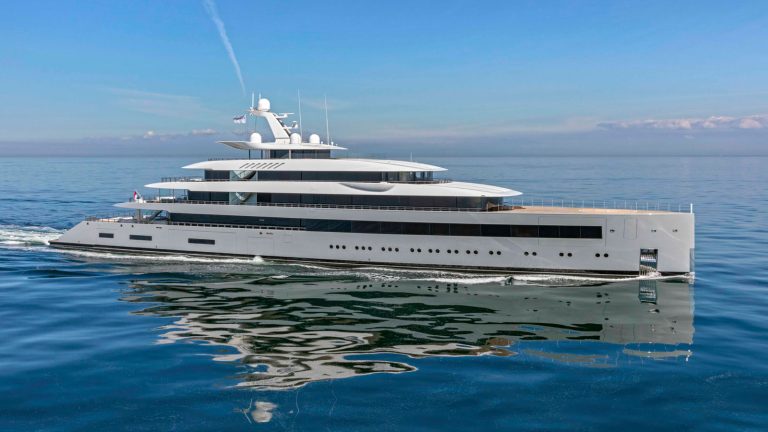Game-Changing Trends in Sports Court Design and Maintenance
Table of Contents
- Changing Designs in Sports Facilities
- Sustainability and Eco-Friendly Choices
- Advancements in Surface Technology
- Safety Standards for Players and Spectators
- Climate Considerations in Court Construction
- Regular Maintenance Strategies
- Community Involvement in Court Upkeep
- Future Trends: Smart Courts and Data Integration
- Conclusion
Sports court construction and maintenance have evolved dramatically in recent years, balancing technological innovation, sustainability, and community involvement. Whether creating a new basketball court or transforming a tennis facility, understanding modern trends is crucial for delivering courts that meet the expectations of today’s athletes and communities. Industry leaders like McConnell and Associates are setting the standard for quality and forward-thinking in court construction and long-term care, helping organizations navigate these modern challenges. As sports participation grows and community engagement deepens, the expectations for facility quality have never been higher. The modern sports court must withstand heavy use, meet rigorous safety standards, and incorporate innovations that improve both performance and sustainability. This article explores the key trends shaping the future of sports court construction and maintenance, offering actionable insights for facility owners, planners, and local leaders.
Changing Designs in Sports Facilities
The design of sports courts is no longer a one-size-fits-all approach. Today’s facility planners focus on multi-functionality, accessibility, and community engagement. Many projects now combine multiple sports such as basketball, pickleball, volleyball, and futsal into a single complex, maximizing utility and expanding appeal. Flexible layouts, innovative lighting, and spectator-friendly amenities are becoming standard, ensuring courts serve as lively community hubs rather than single-purpose facilities. Additionally, there is a growing trend toward integrating sports venues with surrounding landscapes—such as open seating areas, green spaces, and shared walking trails—enhancing both functionality and visual appeal. This evolution aligns with architectural trends as sports infrastructure develops to promote recreation and social interaction.
Sustainability and Eco-Friendly Choices
Sustainability is becoming a non-negotiable requirement in the construction and maintenance of athletic facilities. Sports court builders now prioritize eco-friendly materials, such as recycled rubber or post-consumer plastics, in surfacing options. Energy-efficient lighting, water-saving irrigation systems for adjacent landscaping, and solar-powered amenities demonstrate how modern courts reduce their environmental footprint while enhancing usability. Guidelines from authoritative organizations such as the U.S. Green Building Council drive these initiatives, recommending sustainable certifications for sports and recreation facilities. By aligning with these best practices, facility owners not only reduce operational costs but also contribute to healthier communities and a more sustainable future.
Advancements in Surface Technology
Perhaps the most striking transformation in sports court construction is found in surface technology. New generations of acrylic coatings, interlocking tiles, and cushioned base systems offer superior performance for athletes while reducing risks of impact-related injuries. Increasingly, permeable court surfacing promotes superior drainage, reduces water-related damage, and extends the court’s lifespan. Research from organizations like the Sports and Fitness Industry Association reveals that facilities adopting advanced surface materials report increased user satisfaction and fewer injuries. These innovations minimize maintenance requirements and keep courts looking and performing their best through years of use.
Safety Standards for Players and Spectators
Safety is an ever-present concern in sports facility management. Up-to-date regulations now emphasize features such as non-slip surfaces, shock-absorbing barriers, padded fence posts, and clearly delineated boundaries. Adequate, well-placed lighting plays a crucial role, not just for play after dark but also for ensuring visibility that protects against accidents. High-quality fencing and netting add an extra layer of protection for spectators. Facility managers must continually monitor evolving safety codes and conduct regular inspections to identify risks early. Adhering to best practices fosters trust among users and decreases liability for facility owners.
Climate Considerations in Court Construction
Local climate plays an essential role in the design and construction of effective sports courts. Regions with frequent rainfall require advanced drainage solutions and mildew-resistant surfacing to preserve safety and durability. In warmer climates, specialized coatings that reflect heat and UV radiation help reduce surface temperatures, keeping courts playable in high heat. In colder regions, frost-resistant materials and sub-surface heating cables can prevent damage during freeze-thaw cycles. By accounting for climate factors from the outset, facility planners ensure their courts remain functional, safe, and visually appealing throughout the year.
Regular Maintenance Strategies
Consistent maintenance is essential to protecting the considerable investment in a sports court. Routine cleaning, prompt crack repair, and detailed seasonal inspections help prevent larger, costlier repairs down the line. Scheduling regular resurfacing—based on usage level and manufacturer recommendations—extends the court’s lifespan and maintains essential safety standards. Proactive maintenance also boosts player satisfaction and facility reputation, ensuring that courts remain in optimal condition for competitions, practices, and community events.
Community Involvement in Court Upkeep
A court’s success is deeply connected to the people who use and care for it. Community-driven maintenance days, fundraising for upgrades, and direct input in facility planning help build a sense of ownership and pride. Many facilities succeed by partnering with local schools, sports clubs, and nonprofit organizations to keep courts well-maintained.
Engaging community volunteers not only spreads out maintenance duties and costs but also deepens connections between the courts and residents who rely on them.
Future Trends: Smart Courts and Data Integration
Technological innovation is set to transform the future of sports court management. Smart courts embedded with sensors can now track court usage, measure playing surface wear, and monitor environmental conditions in real time. These systems help facility managers monitor maintenance needs proactively, predict repair timelines, and optimize scheduling for maximum usage. Integrating smart technologies streamlines court upkeep and allows for enhanced experiences, where athletes can access performance statistics and personalized feedback. The rise of IoT in sports facilities is transforming how communities interact with, maintain, and enjoy athletic spaces.
Conclusion
Sports court construction and maintenance are no longer just about creating a playing surface—they are about building durable, sustainable, and community-centered spaces that evolve with modern needs. From innovative designs and eco-friendly practices to advanced surfaces, climate-ready materials, and smart technologies, these trends ensure facilities can meet the demands of both athletes and local communities. Facility owners and planners who embrace these changes will not only extend the life and safety of their courts but also foster stronger engagement and healthier lifestyles. As the industry continues to innovate, the courts of tomorrow will be smarter, safer, and more sustainable—true cornerstones of vibrant, active communities.






